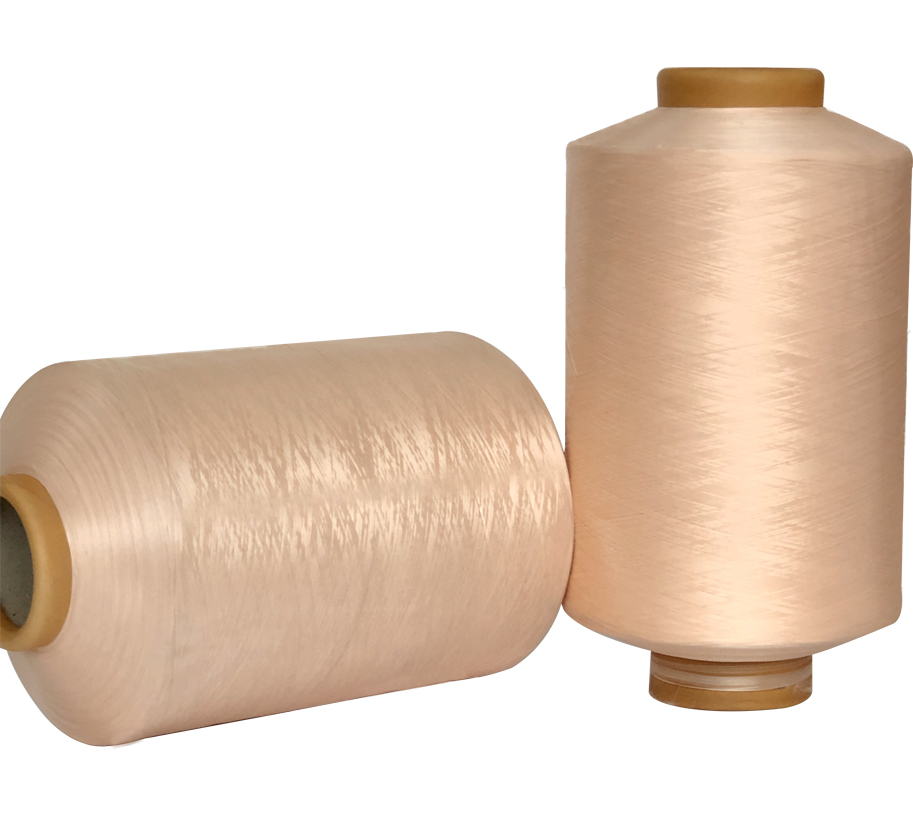White/Brown/Green 150D/48F DTY Yarn 99.99% Polyester AA Grade Eco-friendly Yarn ...
See DetailsMulti-fiber blended dyed yarn is a new variety of dyed yarn developed and produced in the late 1990s. The biggest difference between it and hemp grey yarn and colored yarn is not only the change in the color of the spinning fiber raw materials, but also the change in the structure of the raw materials that make up the yarn.
Since various fibers have certain advantages and disadvantages, the use of a variety of fiber blends can complement each other's strengths and make full use of the properties of various fibers. In production, it can not only improve the spinnability, but also improve the wearability of the garments. Therefore, the use of multiple fiber combination spinning is the development trend of spinning technology. At present, the main types of multi-fiber blended dyed spinning are as follows:
Colored cotton blended with new cellulose fiber
Such as blending with Tencel, Modal and bamboo fiber. Example ⑴, using 50% modal fiber (1.33dtex×38mm), dyed long staple cotton 30%, polyester staple fiber (1.33dtex×38mm) 20% blended into 19.7tex yarn. Because Modal fiber has good dyeability and bright color after dyeing, it can improve the shortcomings of poor stiffness of Modal fiber after being blended with long-staple cotton and polyester. At the same time, Modal fiber is dyed with raw materials , and then dyed with the original solution. The polyester blended spinning yarn made into fabric is not dyed, and can be directly used for processing high-grade inner and outer garment yarn.
Colored cotton blended with natural animal and plant fibers
Such as blended with wool, cashmere, spun silk and linen. When blended with wool and cashmere, the general wool content is between 5%-35%, and when blended with spun silk, the ratio is controlled at 10-35%. When blended with bast fiber, it highlights the moisture-absorbing and breathable style of bast fiber. Generally, the ratio of bast fiber is Slightly higher than cotton, the conventional ratio is 55/45 hemp/cotton.

Example ⑴, colored cotton/viscose/bamboo charcoal fiber/wool four-in-one blended 14.8tex colored yarn, of which 30% long-staple cotton 50% viscose fiber (1.33dtex×38mm), bamboo charcoal fiber 10%, 80Nm wool 10% composition. Long-staple cotton and viscose are dyed and then blended with bamboo charcoal fiber and wool in proportion to spun into yarn. Because cotton fiber and viscose fiber have good dyeability and moisture absorption, wool has good resilience and warmth retention, which makes four groups The fiber-divided blended colored yarn fully presents the advantages of each component fiber. The fabric made of the yarn has the characteristics of strong moisture absorption, good warmth retention, good elasticity, bright color and so on. It is a yarn for making high-end fabrics.
Example ⑵, Tencel/spun silk/cotton fiber three-in-one fine special 8.5tex knitting yarn. Using three kinds of raw materials: Tencel (1.33dtex×38mm) 60%, spun silk 15%, 137 long-staple cotton 25%, the tencel fiber and long-staple cotton are made into cotton net and then dyed in proportion to the raw materials of spun silk. A small amount of blended cotton is arranged in bags, spun into extra-fine yarn by spinning process. Because the three-in-one yarn uses new materials such as Tencel, spun silk and long-staple cotton blended, it fully demonstrates the characteristics of various mixed fibers. The fabric made from this yarn has good moisture absorption, bright color and smooth hand feeling. Cool, comfortable to wear and other properties.
Colored cotton blended with functional fibers, highlighting the functionality of the yarn
For example, colored cotton and Jakesu fiber blended colored yarn has antibacterial and antibacterial effects; colored cotton and pearl jade fiber blended yarn has beauty and skin-friendly functions; colored cotton and temperature-regulating fiber blended yarn has warmth retention effect; colored cotton and pearl jade fiber blended yarn have warmth retention effects; Hemp fiber blended yarn not only has moisture absorption and quick-drying function, but also has antibacterial and antibacterial functions. For example, Zhejiang Shaoxing Huatong Mélange Co., Ltd. recently developed two series of blended colored cotton and hemp fiber. One is a blend of colored cotton 65% and hemp 35%, with a spinning count of up to 60-80s, and the other is Hemp 55% and 45% colored cotton blended yarn, the spinning count is 30s, and the is 70s. With these two kinds of yarns, there are more than 10 kinds of "Ji Ma Liang Si" products developed, including knitted inner and outer garments, T-shirts, shirts, etc., as well as home textile products such as bed sheets and duvet covers, as well as decorations. Carpets, wall coverings, etc., have fully demonstrated the functions of hemp fiber, such as moisture absorption, breathability, antibacterial and antibacterial. Therefore, the development of hemp (including hemp and linen) blended yarns has good development prospects.